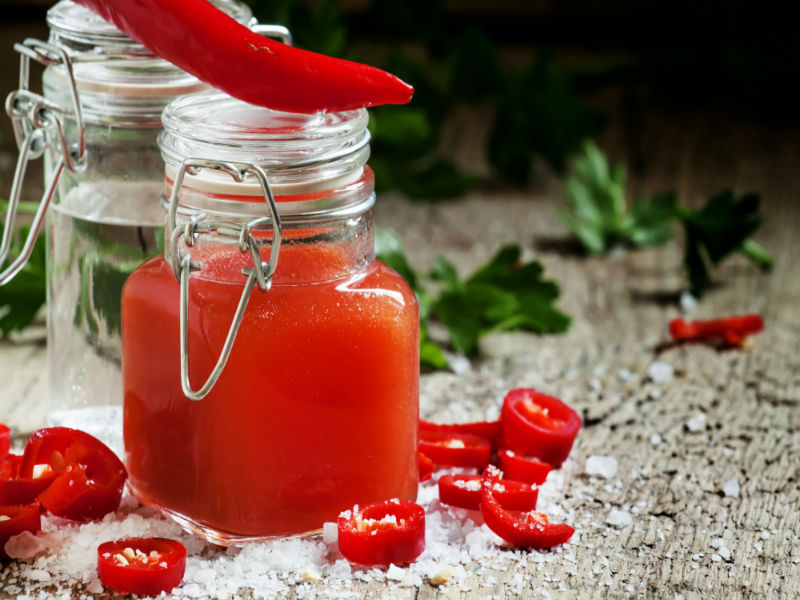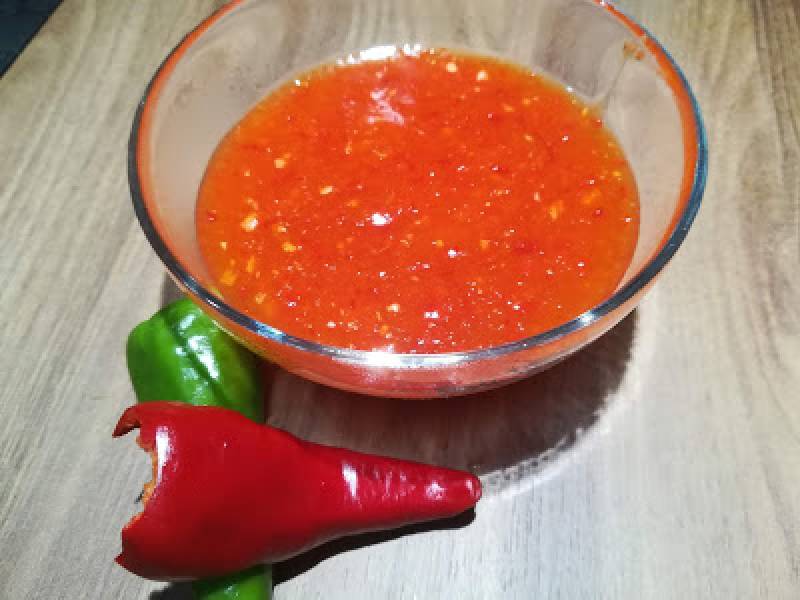The Sizzling World of Spicy Sauces: A Flavorsome Journey
Introduction:
Spicy sauce has become an integral part of cuisines around the world, elevating dishes with its fiery kick and tantalizing flavors. Whether it’s the heat of chili peppers or the complexity of exotic spices, spicy sauces have the power to transform ordinary meals into extraordinary culinary experiences. In this article, we will take a deep dive into the sizzling world of spicy sauces, exploring their history, ingredients, types, health benefits, and cultural significance.
1. The Origins and History of Spicy Sauces:
Spicy sauces have been used for centuries in various cultures. The use of chili peppers, renowned for their fiery heat, originated in the Americas and then spread to Europe, Asia, and other parts of the world through exploration and trade. Ancient civilizations such as the Mayans and Aztecs showcased the versatility of chili peppers in their traditional recipes. Over time, different regions developed their unique variations of spicy sauces, incorporating local ingredients and flavors.
2. Ingredients That Give Spicy Sauces Their Kick:
The primary ingredient in most spicy sauces is the chili pepper, which contains capsaicin, responsible for the heat sensation. Various chili pepper varieties, such as jalapeno, habanero, and cayenne, contribute different levels of heat and distinct flavors. In addition to chili peppers, spicy sauces may include vinegar, garlic, ginger, onions, herbs, and spices, creating a harmonious blend of flavors that complements the heat.
3. Types of Spicy Sauces:
a) Traditional Hot Sauces:
Traditional hot sauces, often found in Mexican and Southeast Asian cuisines, are made by fermenting chili peppers, vinegar, salt, and sometimes garlic. Examples include Tabasco sauce and Sriracha sauce. Each hot sauce has its unique flavor profile, ranging from tangy and pungent to sweet and smoky.
b) Salsa:
Salsa, a staple in Mexican cuisine, is a chunky sauce made with tomatoes, onions, peppers, herbs, and spices. It can range from mild to extremely hot, depending on the types of chili peppers used.

c) Chili Oil:
Chili oil is a popular condiment in Chinese cuisine, made by infusing oil with chili peppers, often combined with garlic, ginger, and other aromatic ingredients. It adds a spicy kick to stir-fries, noodle dishes, and dumplings.
d) Harissa:
Originally from North Africa, harissa is a fiery chili paste made with red peppers, garlic, spices, and olive oil. It is commonly used in Moroccan and Tunisian cuisines to enhance the flavor of stews, couscous, and grilled meats.
e) Wasabi:
Hailing from Japan, wasabi is made from the pungent root of the Wasabia japonica plant. It provides a distinct peppery heat and is commonly served with sushi, sashimi, and other Japanese dishes.
f) BBQ Sauce:
Often associated with Southern cuisine in the United States, spicy BBQ sauce combines elements of sweet, tangy, and smoky flavors with a kick of spice. It is perfect for marinating and basting grilled meats and vegetables.
4. Health Benefits of Spicy Sauces:
a) Boosts Metabolism:
Capsaicin, the compound responsible for the heat in chili peppers, has been found to boost metabolism, increase calorie burning, and aid in weight management.
b) Pain Relief:
Capsaicin is also known for its analgesic properties. Topical creams and ointments containing capsaicin are used to alleviate muscle and joint pain.

c) Antioxidant and Anti-Inflammatory Properties:
The spices and herbs used in spicy sauces often possess antioxidant and anti-inflammatory properties, which may help reduce the risk of chronic diseases, including heart disease and certain types of cancer.
d) Enhances Digestion:
Some spicy sauces, such as ginger-based sauces, can aid digestion by promoting the release of digestive enzymes and improving gut health.
5. Cultural Significance of Spicy Sauces:
Spicy sauces play an essential role in cultural and regional cuisines. They are a defining element of traditional dishes, representing the unique flavors and character of a particular culture. In some cultures, a meal is considered incomplete without a dash of spicy sauce. Spicy sauces are not only a culinary delight but also a cultural symbol, often tied to specific festivals, celebrations, and rituals.
Conclusion:
Spicy sauces are the embodiment of flavor and heat, bringing vibrance to countless dishes worldwide. From the fiery kick of Mexican hot sauces to the aromatic heat of Asian chili oils, the world of spicy sauces offers an endless array of tastes and experiences. Understanding the origins, ingredients, types, health benefits, and cultural significance of spicy sauces allows us to appreciate their versatile nature and incorporate them into our culinary adventures. So, next time you want to turn up the heat, don’t hesitate to explore the sizzling world of spicy sauces.1. Market Trends and Growth Opportunities:
The spicy sauce industry is experiencing remarkable growth, driven by increasing consumer demand for bold and innovative flavors. Changing consumer palates, globalization, and the popularity of ethnic cuisines have contributed to the surging demand for spicy sauces. According to a report by Grand View Research, the global hot sauce market is expected to reach $3.77 billion by 2027, reflecting a compound annual growth rate (CAGR) of 6.9% from 2020 to 2027. This presents significant opportunities for businesses in this sector to capitalize on the growing trend.
2. Diversification and Innovation:
To stay competitive in the spicy sauce industry, businesses are diversifying their product offerings and embracing innovation. This includes expanding product lines to cater to different heat levels and flavor profiles, incorporating unique and exotic ingredients, and introducing fusion sauces that combine elements from different cuisines. By constantly evolving and innovating, businesses can captivate consumers who are searching for new and exciting spicy sensations.
3. Branding and Packaging:
In a highly competitive market, effective branding and packaging are paramount for businesses in the spicy sauce industry. A well-crafted brand identity and packaging design can differentiate a product from its competitors and create a strong impression on consumers. Businesses should invest in visually appealing labels, informative descriptions, and eye-catching logos that convey the essence of their spicy sauces. Catchy and memorable names can also help establish brand recognition and recall.

4. Distribution Channels:
The distribution landscape plays a crucial role in the success of spicy sauce businesses. Traditional retail channels, such as supermarkets, specialty food stores, and gourmet shops, remain important for reaching a wide consumer base. However, the rapid growth of e-commerce provides additional avenues for expanding reach and attracting global customers. Businesses should establish an online presence through their website or popular e-commerce platforms, making it easy for customers to purchase their spicy sauces conveniently.
5. Culinary Collaborations and Partnerships:
Collaborating with renowned chefs, restaurants, and food influencers can significantly boost the exposure and credibility of spicy sauce brands. This can involve co-creating limited-edition sauces, featuring spicy sauce dishes on restaurant menus, or organizing joint promotional events. By aligning with influential culinary figures, businesses can tap into their expertise and leverage their existing fan base to generate brand awareness and increase sales.
6. Private Label and Contract Manufacturing:
Private labeling and contract manufacturing have emerged as lucrative opportunities for businesses in the spicy sauce industry. Companies can manufacture sauces for other brands or retailers, allowing them to leverage their production capabilities, utilize excess capacity, and generate additional revenue streams. Private labeling also offers the advantage of establishing valuable relationships with retailers and gaining exposure through their distribution networks.
7. Quality Assurance and Food Safety:
Maintaining high standards of quality assurance and food safety is paramount in the spicy sauce industry. Businesses must adhere to strict regulations, ensuring that their products meet health and safety guidelines. Establishing robust quality control measures, testing procedures, and supply chain traceability are essential for building consumer trust and maintaining brand integrity.
8. Competitive Landscape and Market Differentiation:
The competitive landscape of the spicy sauce industry is continuously evolving, with both established players and new entrants vying for market share. To stand out in this crowded market, businesses must identify their unique selling propositions and emphasize their points of differentiation. This could be through the use of niche ingredients, focusing on sustainable sourcing practices, offering organic or all-natural options, or catering to specific dietary preferences such as gluten-free or vegan.
9. Marketing and Promotion Strategies:
Effective marketing and promotion strategies are vital for creating brand awareness and driving sales in the spicy sauce industry. Social media platforms, food blogs, and online recipe platforms provide excellent opportunities for businesses to engage with their target audience and share recipe ideas, cooking tips, and engaging content. Collaborating with food influencers, hosting tasting events, sponsoring food festivals, and participating in trade shows are also effective marketing tactics to reach a wider audience and generate buzz around spicy sauce products.
10. Sustainability and Ethical Practices:

As consumers become more conscious of the environmental impact of food production, businesses in the spicy sauce industry are adopting sustainable practices to meet evolving consumer preferences. This includes sourcing ingredients ethically, supporting local farmers, minimizing waste, using eco-friendly packaging materials, and implementing energy-efficient production processes. Demonstrating a commitment to sustainability can enhance a brand’s reputation and attract environmentally conscious consumers.
Conclusion:
The spicy sauce industry is evolving along with changing consumer tastes and preferences. With the growing global demand for spicy flavors, businesses have ample opportunities to innovate, diversify, and position themselves in the market. By understanding market trends, investing in branding and packaging, exploring distribution channels, forming strategic partnerships, and ensuring quality and food safety, businesses can carve their niche in this competitive industry. With the right marketing and promotion strategies, a commitment to sustainability, and a focus on meeting consumer demands, spicy sauce businesses can sizzle their way to success in the flavorful world of spicy sauces.









